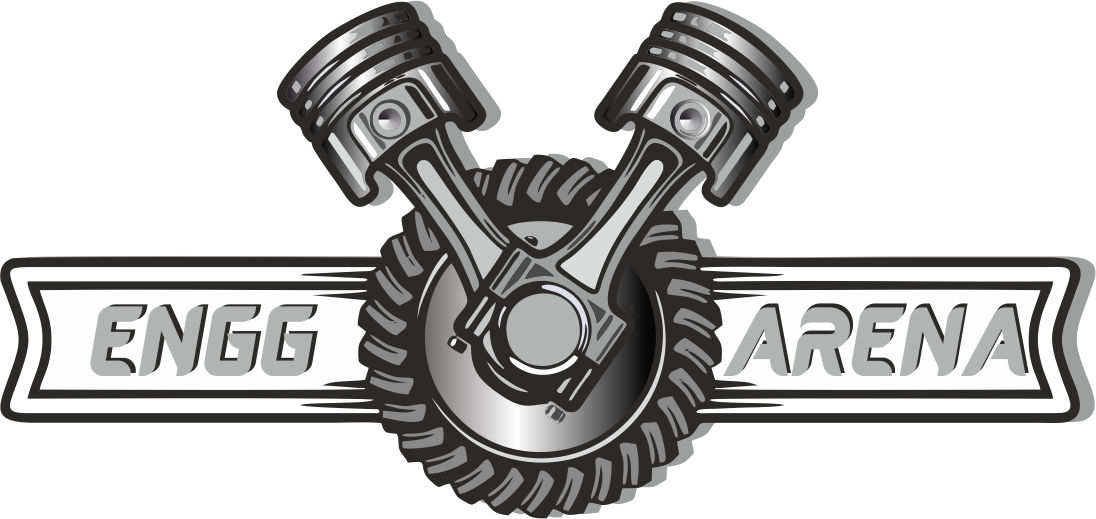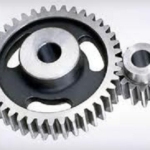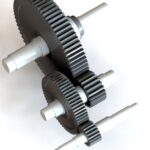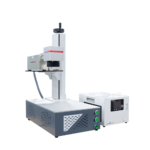In this guide, we’ll explore five types of Electrical Discharge Machining (EDM) and their relevance in sheet metal fabrication. As part of the Tuofa team, I have firsthand experience with these technologies, and I’m excited to share insights that can benefit professionals in the manufacturing industry and mechanical designers.
Table of Contents
Introduction to EDM in Sheet Metal Fabrication
1. What is EDM?
EDM, or Electrical Discharge Machining, is a fascinating fabrication process where electrical discharges (sparks) are used to shape metal. It’s akin to sculpting with lightning – precise, powerful, and incredibly versatile.
How Does It Work?
EDM involves two key components: an electrode and the workpiece. Electrical discharges occur between these two, systematically eroding the material into your desired shape.
CNC machining services can also achieve the same effect as EDM technology, depending on your budget, materials, and precision requirements for the parts
2. Significance of EDM in Sheet Metal Fabrication
Transforming Manufacturing
In the ever-evolving world of manufacturing, EDM stands out for its ability to tackle complex shapes and intricate designs that other methods can’t. It’s a game-changer, especially in producing high-precision components.
Industry Applications
From aerospace to medical devices, EDM’s precision and versatility make it indispensable across various industries.
3. Advantages of EDM in Precision Manufacturing
Unparalleled Accuracy
One of EDM’s most striking features is its ability to achieve ultra-precise cuts, crucial for intricate designs and components.
Material Versatility
EDM isn’t fussy about material types. Whether it’s superalloys or hardened steel, EDM handles it with equal finesse, broadening its application scope.
Complex Geometries? No Problem
With EDM, you’re not limited to simple shapes. The technique effortlessly manages complex 3D geometries, making it invaluable for sophisticated designs.
In the following sections, we’ll unveil the five types of EDM and delve into their specific roles and advantages in sheet metal fabrication. Stay tuned to uncover these facets of modern manufacturing, brought to you by Tuofa – where engineering meets excellence.
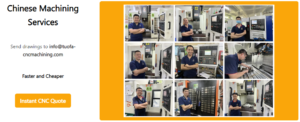
Different Types of EDM Techniques
In the field of sheet metal fabrication, EDM is not a one-size-fits-all solution. Instead, it manifests in various forms, each tailored to specific needs and applications. Here at Tuofa, we leverage these diverse techniques to deliver unparalleled precision in our projects. Let’s explore each of these EDM types in detail.
Wire EDM
-
How Wire EDM Functions
Wire EDM uses a thin wire as an electrode, which is precisely controlled to create intricate cuts in the metal. The wire, charged electrically, slices through the material, eroding it with sparks.
-
Applications in Sheet Metal Fabrication
It’s ideal for creating complex patterns and fine details, especially in tool and die making.
-
Pros and Cons
Pros:
- Exceptional precision for intricate cuts
- Minimal impact on the material’s integrity
Cons:
- Slower process compared to other methods
- Limited to conducting materials
Sinker EDM
-
Mechanism of Sinker EDM
Sinker EDM, also known as die sinker or ram EDM, uses a shaped electrode to form complex geometries in a workpiece.
-
Use Cases in Complex Metal Forms
This method shines in creating molds, dies, and intricate cavities.
-
Advantages and Limitations
Advantages:
- Capable of producing complex shapes with high precision
- Excellent for hard materials
Limitations:
- Requires pre-machined electrodes
- Slower than Wire EDM for simpler tasks
Fast Hole Drilling EDM
-
Fast Hole Drilling EDM Explained
This variant specializes in creating small, deep holes quickly and accurately.
-
Applications in High-Precision Drilling
Ideal for applications like cooling holes in aerospace components and spinnerets in textile manufacturing.
-
Benefits and Considerations
Benefits:
- Fast and precise drilling of deep, small diameter holes
- Minimal burring
Considerations:
- Depth-to-diameter ratio limits
- Not suitable for very large holes
Ram EDM
-
Understanding Ram EDM Process
Ram EDM involves a pre-shaped electrode that moves along the desired path in the workpiece, eroding material with electrical discharges.
-
Industrial Applications of Ram EDM
Often used in forming complex shapes like gears and intricate cavities.
-
Strengths and Weaknesses
Strengths:
- Ideal for 3D complex shapes
- High precision and surface finish
Weaknesses:
- Longer setup times
- Electrode wear can affect consistency
Micro EDM
-
The Concept of Micro EDM
Micro EDM is a miniature version of the EDM process, capable of producing extremely small and precise features.
-
Micro EDM in Micro-Manufacturing
It’s a go-to for micro-manufacturing sectors like medical devices, micro-electronics, and fine mechanics.
-
Advantages and Challenges
Advantages:
- Superior precision for micro-scale features
- Can process a wide range of materials
Challenges:
- Slow processing speed
- Requires specialized equipment and expertise
Each of these EDM techniques brings its unique strengths to the table. At Tuofa, we understand the intricacies of these methods and how to apply them effectively in various manufacturing scenarios. Embracing these technologies, we continue to push the boundaries of precision and innovation in sheet metal fabrication.
Comparison of EDM Technologies in Sheet Metal Fabrication
Understanding the nuances and specific applications of different EDM technologies is crucial in selecting the right method for a project. At Tuofa China, we weigh various factors to make informed decisions on the most suitable EDM technique for each task.
- Wire EDM vs. Sinker EDM
Wire EDM is excellent for detailed cuts and external contours. Its ability to produce fine details and complex patterns makes it a top choice for intricate parts.
Sinker EDM, on the other hand, is the go-to for 3D shapes, deep cavities, and molds. It excels in creating internal geometries that Wire EDM cannot achieve.
- Ram EDM and Micro EDM: When to Use Each
Ram EDM is preferred for larger, complex shapes where the electrode can follow a 3D path. It’s ideal for components like gears or intricate cavities in larger parts.
Micro EDM is the choice for ultra-precise, micro-scale features. It’s indispensable in industries where miniature components with tight tolerances are required, like in medical devices.
- Factors to Consider When Choosing an EDM Type
Complexity of the Design: Detailed external patterns suit Wire EDM, while complex internal geometries favor Sinker or Ram EDM.
Material Type and Thickness: Some EDM methods work better with certain materials or material thicknesses.
Tolerance and Precision Needs: High precision requirements, especially on a micro-scale, often require Micro EDM.
Production Volume and Speed: Certain EDM methods are faster but might not offer the same level of detail or precision.
Innovations and Advanced Applications in EDM
The realm of EDM is continually evolving, with new innovations and applications emerging in various high-tech industries.
- Creating Detailed and Complex Designs
Advancements in EDM technology have vastly expanded our ability to create highly detailed and complex designs, pushing the limits of what’s possible in metal fabrication.
- EDM in High-Tech Industries: Aerospace and Medical
Aerospace: EDM is pivotal in producing lightweight, high-strength components, crucial for aerospace applications.
Medical: The precision of EDM, especially Micro EDM, is ideal for creating intricate medical devices and implants.
- Future Trends and Technological Advancements in EDM
Automation and AI Integration: Increasing automation and the use of AI in EDM processes enhance precision and efficiency.
Eco-friendly Developments: There’s a growing focus on making EDM more environmentally friendly, reducing waste and energy consumption.
Material Innovations: Newer materials and alloys are continually being tested for compatibility with EDM, expanding its applications.
At Tuofa, we stay at the forefront of these advancements, integrating the latest EDM technologies to meet and exceed the needs of our clients in the ever-evolving landscape of sheet metal fabrication.
Best Practices in EDM for Optimal Results
At Tuofa, we understand that achieving the best results in EDM requires more than just technical know-how; it requires a commitment to best practices at every stage of the process. Here’s how we ensure optimal outcomes in our EDM operations.
- Achieving Precision in EDM Processes
Optimal Machine Settings: Carefully calibrating the EDM machine settings like voltage, current, and pulse duration to suit the specific material and geometry of the part.
Regular Calibration: Ensuring machines are regularly calibrated and checked for precision to maintain the highest quality standards.
Skillful Design and Planning: Detailed planning and expert design of the tooling and electrodes, considering the complexity of the part and the type of EDM used.
- Material Selection for EDM
Conductivity Considerations: Selecting materials with the right electrical conductivity for efficient machining.
Material Quality: Using high-quality materials to reduce the risk of defects and inconsistencies during the EDM process.
Compatibility with EDM Type: Matching the material characteristics to the specific EDM method being used, whether it’s Wire, Sinker, or Micro EDM.
- Maintaining EDM Equipment for Efficiency
Regular Maintenance: Performing routine maintenance checks to prevent machine downtime and ensure consistent performance.
Electrode Quality: Using high-quality electrodes and replacing them as needed to maintain precision and efficiency.
Coolant and Filtration System Care: Keeping the coolant clean and ensuring the filtration system is functioning properly to avoid any contamination that could affect the machining process.
Case Studies: EDM Success Stories at Tuofa
- Wire EDM in Customized Parts Manufacturing
Project Overview: Creating customized, intricate parts for a high-end automotive client.
Process and Outcome: Utilizing Wire EDM’s precision, we achieved complex geometries with tight tolerances, resulting in parts that met the client’s exact specifications.
- Sinker EDM for Intricate Component Design
Project Overview: Manufacturing detailed mold components for a medical device.
Process and Outcome: Through Sinker EDM, we were able to create deep, intricate cavities in hardened steel, achieving the precise dimensions and surface finish required.
- Micro EDM in Precision Instrumentation
Project Overview: Fabricating micro-scale components for precision optical instrumentation.
Process and Outcome: Micro EDM allowed us to manufacture extremely small and precise components, essential for the sensitive instrumentation’s functionality.
In each of these cases, Tuofa’s expertise in EDM was instrumental in meeting and exceeding our clients’ expectations. By adhering to best practices and leveraging our extensive experience, we continue to deliver outstanding results in the field of precision metal fabrication.
Conclusion: Embracing the Diversity of EDM in Sheet Metal Fabrication
As we conclude this comprehensive guide, it’s clear that Electrical Discharge Machining (EDM) is not just a technique; it’s a cornerstone of modern precision manufacturing. The diversity and adaptability of EDM methods have opened up new horizons in sheet metal fabrication. Let’s encapsulate the key takeaways and look at how Tuofa is pioneering in this field.
1. Summary of Key Points
Diverse Techniques: We explored five distinct EDM types – Wire EDM, Sinker EDM, Fast Hole Drilling EDM, Ram EDM, and Micro EDM – each with its unique strengths and applications.
Precision and Versatility: EDM stands out for its unmatched precision and versatility, making it suitable for a wide range of industries, from aerospace to medical.
Best Practices: Achieving optimal results in EDM requires meticulous planning, precise material selection, and diligent maintenance of equipment.
2. The Evolving Role of EDM in Manufacturing
EDM’s role in manufacturing is constantly evolving. It has become integral in creating complex geometries and ultra-precise components that were once deemed impossible. As technology advances, EDM continues to push the boundaries, leading to more efficient, accurate, and innovative manufacturing solutions.
3. How Tuofa is Pioneering in EDM Application
At Tuofa, we’re not just using EDM; we’re innovating with it. Our commitment to embracing the latest advancements and integrating them into our practices sets us apart:
Customization and Innovation: We specialize in customizing EDM solutions for unique project requirements, ensuring each client gets the best outcome.
Industry Leadership: Our expertise in EDM makes us leaders in the field, continually exploring new applications and techniques to stay ahead of the curve.
Dedication to Excellence: We maintain a relentless focus on quality and precision, rooted in our deep understanding of EDM’s capabilities and potential.
EDM’s journey from a niche machining process to a staple in precision manufacturing is a testament to its versatility and capacity for innovation. At Tuofa, we proudly contribute to this journey, harnessing the power of EDM to create extraordinary results in sheet metal fabrication. As we look to the future, we’re excited to continue exploring the ever-expanding possibilities of EDM, ensuring our clients receive nothing but the best in precision manufacturing.
